A missing native predator, pine marten are charismatic animals, about the size of a cat with chestnut brown fur and a creamy yellow bib over the throat and chest. Visitors flock to catch a glimpse at ecotourism sites across Scotland and the North of England, where feeding platforms are baited with peanut butter and pine martens eat and play, twisting and turning like their relatives the otter, polecat and ferret. Pine martens are excellent representatives of a wilder landscape and their role has been key in the growth of ecotourism and more people getting to connect with nature.
Derbyshire’s Missing Pine Marten
©Mark Hamblin/2020VISION
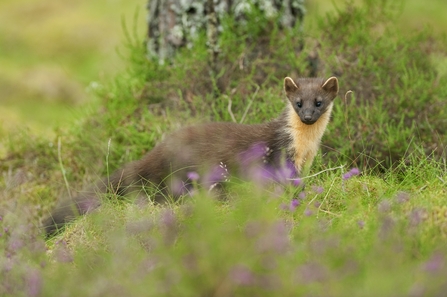
Pine Marten (c) Terry Whittaker/2020VISION
Pine marten are a missing native species. They play a key role in creating healthy woodland ecosystems and in their role as a predator, they can have significant impacts rebalancing levels of pest species such as the non-native grey squirrel. Having evolved alongside the pine marten, native red squirrel can evade the pine marten, but the non-native grey squirrel is quickly caught. In the short-term, this creates a ready food source for recovering pine marten populations while also reducing grey squirrel numbers to the point at which longer-term a red squirrel recovery project may become possible. This highlights the crucial role species reintroductions play in restoring and sustaining healthy ecosystems. This is critical work to rebalance our woodland ecosystems and increase biodiversity, therefore increasing our resilience to the ongoing climate crisis.
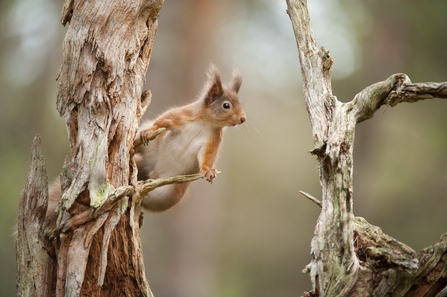
Red Squirrel (c) Mark Hamblin/2020VISION
As largely solitary predators, pine marten move across large territories of roughly 150-400 hectares, with at least 100 hectares of woodland within that. Pine marten can exist with some habitat fragmentation, but they will travel long distances to find a sustainable territory.
The last sighting of a pine marten in Derbyshire was sadly a road collision victim on the A38 near Ripley on 9th July 2018, but it was later deduced that the pine marten had travelled all the way from Wales.
What this means is that for a reintroduction anywhere in Derbyshire, the whole county has to be ready for pine marten arrival. We have an ambition to reintroduction pine marten to Derbyshire by 2030. We are working towards this as part of our Derwent Living Forest, as this programme supports a network of landowners already working on wooded habitat creation, but we will ensure that any feasibility and consultation work is carried out at a county scale.
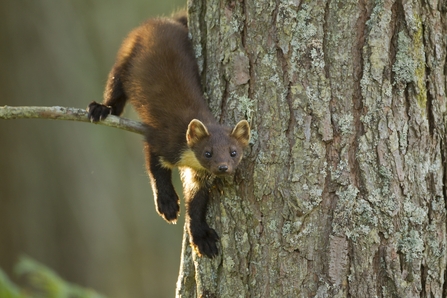
Pine Marten (c) Mark Hamblin/2020VISION
Parts of Derbyshire are already well wooded and could provide pine marten with everything they need to flourish. As with any reintroduction we will work to ensure that the landscape can support them and we are committed to creating more wooded habitat in Derbyshire, creating connected habitat for pine marten to roam freely across the county and interact with neighbouring populations.
In the short-term, we are working with some of Derbyshire’s largest landowners, mapping the available woodland for a reintroduction and exploring mitigation measures to ensure pine martens behaviour isn’t influenced by this limited space to the point of having negative impacts on the existing landscape. Mitigation measures will be needed for any risks to reintroduction such as over predation of endangered species, or impact on food and sport businesses which have a history of persecuting native predators.
Longer-term, we are working with these landowners and our networks of other farmers and landowners across the landscape to commit to wooded habitat creation for a wilder landscape. Landowners are still limited in the financial viability of wooded habitats, but increasingly schemes such as the Woodland Carbon Code, Biodiversity Net-Gain and Landscape Recovery Schemes are ensuring sustainable payments for woodlands, hedgerows, orchards and parklands. Pine martens could also offer landowners the opportunity to generate sustainable income form ecotourism, as has been shown where pine martens live in Scotland.
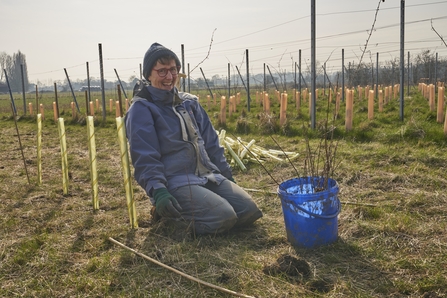
Tree Planting (c) Richard Osbourne
It takes over 30 years for trees to mature, so we must start now!
In our Derwent Living Forest Programme we have worked through 8 projects since 2020 to create a network of 165 landowners with a cumulative pipeline of 1600Ha for wooded habitat creation. We are currently working through 3 economics projects to investigate the viability of new funding incentives and to provide landowners with 1-2-1 support, tools and resources for embracing new schemes.
In addition, we have been creating a framework for species reintroduction, working with 23 key agencies for Derbyshire’s wild Beaver Feasibility Assessment. This approach is ensuring we share power in decision making, secure fair support for anyone who may be impacted and ensure any reintroduction is sustainable and free from persecution.
Over the next 5 years of our Wilder 2030 strategy, we will build on this foundation to deliver a series of projects in pursuit of pine marten reintroduction, delivering in-depth feasibility and consultation work, as well as ongoing habitat creation to ensure a welcome return for pine marten and safety for future generations.
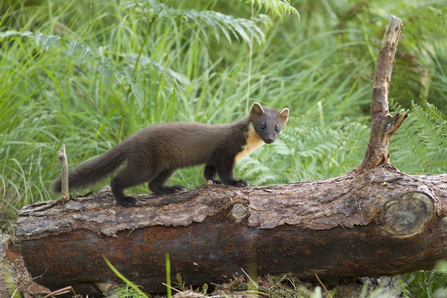
Pine marten, Mark Hamblin/2020VISION
Want to get involved? Register your land today to hear back from our team of experts

